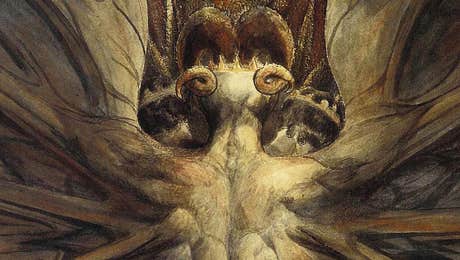
William Blake - Canvas Prints
William Blake (1757-1827) was the third of seven children born to James and Catherine Blake in the Soho District of London. He was an eclectic fellow from a young age, enjoying poetry and printmaking along with painting. Blake was noted to have had visions from a very early age. This may have served to inspire his unique and visual art. He favored renaissance artists Raphael, Michelangelo and Durer and they are said to have influenced his style. He used an original technique called "relief etching." The idea reportedly came to him in a vision shortly following his brother's death. Blake later worked with a series of large colored prints which he dubbed as "fresco." This used paints, oils and colored chalks to make a painting, pull prints off by pressing paper to them, and finish with ink and then paint them with water colors. He used his own writings and the Bible mostly to pull imagery for his art work. In 1826, Linnell commissioned Blake to place Dante's Divine Comedy into a series of engravings. Because of his death a year later only a few watercolors and some engravings were finished, all of which have received quite a bit of praise for. As far as his poetry goes he had a large influence on the Beat poets of the 1950's and 60's, even cited by such poets as Allen Ginsberg. Some have also considered him the starting point of surrealism as he developed his art into a more imaginative, dream-like journey of the mind instead of the traditional landscape or human portraits of the time.